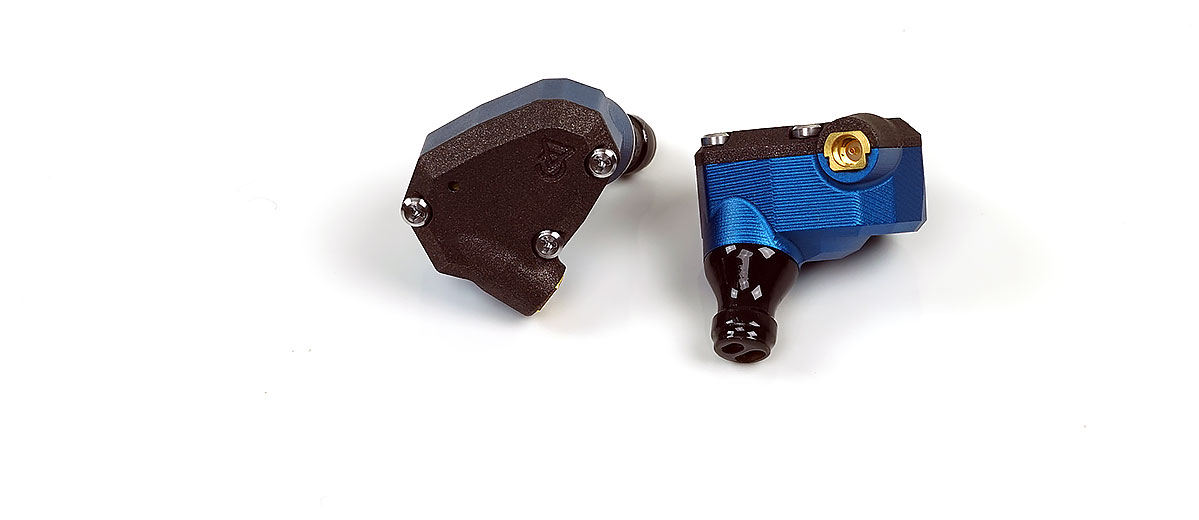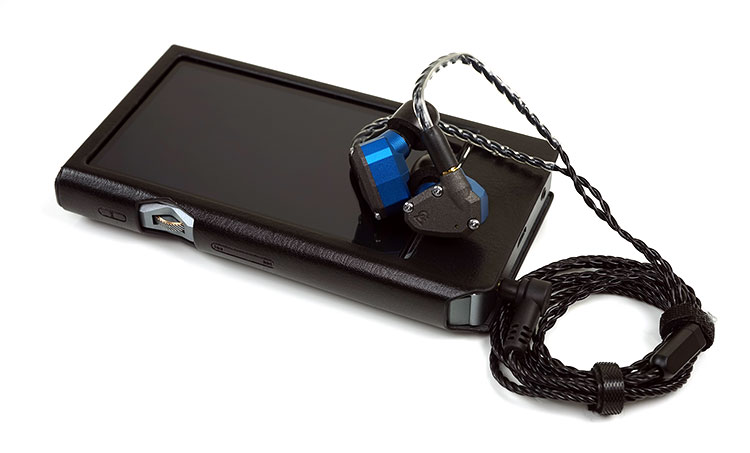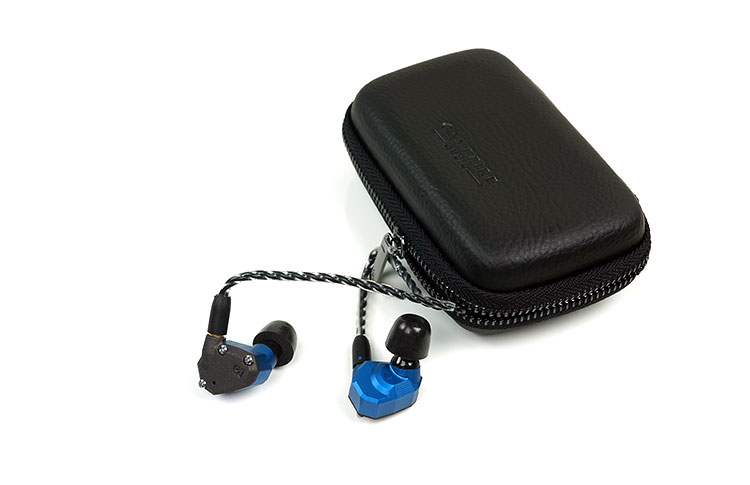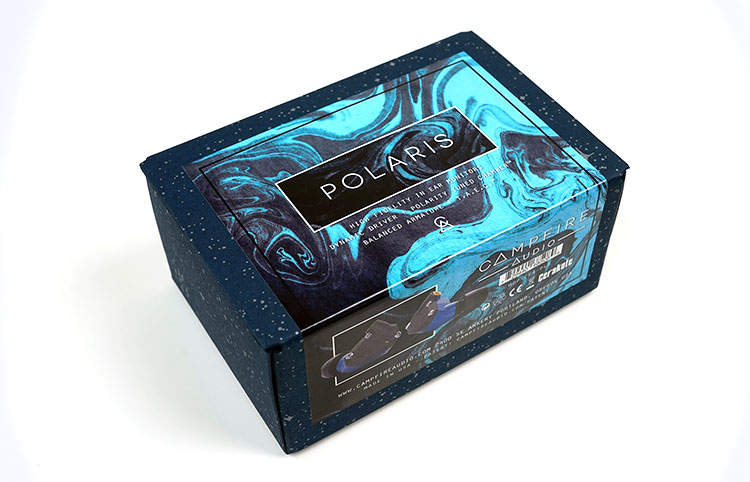Polaris Sound Impressions
Tonality & Presentation
The Polaris walks a fine line between the musical emphasis of the Dorado and the richer more laid-back tone of the Lyra II’s single dynamic driver delivery.
Tonally this is a warm to natural sound with more of W shape than a V or U-shape. Yes, the Polaris bass is firmly planted with perhaps more mid-bass emphasis than the Lyra II but it is not as physical and dense sounding as the Vega’s. Compared to the Dorado it has a little less emphasis on its sub-bass response also. So it is impactful, full sounding with a very nice level of texture and decay as only a dynamic driver can provide but importantly, it is not overblown and retains an above-average speed.
I also felt this is one of the more coherent sounding hybrid presentations with a better DD to BA crossover than the IT03’s lively but slightly detached transition from the DD to the BAs. I suspect the crossover point on this hybrid is around the 2k marker because the speed and energy picks up substantially on female vocals and the upper mids.
Staging wise the Polaris has good depth, excellent height with a forward upper mids, and a slightly further back lower mid-range. Its actually quite open and airy sounding in its top-end which I really like and something I knew would be the case with the TAEC system in full flow. Overall though the forward vocal presence and stronger mid-bass impact pull things in a little giving a slightly more intimate emphasis to the Polaris staging.
Bass
The bass response on the Polaris is a very good quality dynamic driver signature with a really nice level of texture and decay and tuned to avoid any unnecessary bloom. It can hit hard but it is more subtle in its elevation than I expected and pleasingly coherent sounding as a result.
The low-end really gets into its stride around 50-100Hz with an elevated curve bringing in a decent level of impact and warmth. Sub-bass presence is a little tailed off in comparison with around a 2-3dB drop sub-50Hz which is one of the key differences between the Dorado low-end and the Polaris bass signature. The Dorado will deliver a little more power whereas the Polaris will focus more on mid-bass impact.
The Polaris bass response starts a slow but steady drop from 100Hz down to around 800Hz-1k preventing any bass bleed into the lower mids and keeping clarity at a premium. Its a fairly long descent and there is quite a marked difference between lower-mids and upper mids on the Polaris. Lower instrumental notes have decent bass fundamentals but overall the note body, once you transition out of the bass into the lower mid’s, is a touch thinner sounding.
Mids
Mids on the Polaris have a bit of a split personality. That dip from the bass to the lower mids (100Hz to around 800-1k) precedes a jump in energy starting around 900hz and continuing on to around 2-3k where it levels out a bit through the upper mids into it’s lower treble.
As such instrumental presence is pulled back a bit in terms of body and position in favor of a more forward mid to upper mids presence which particularly suits higher pitched vocals, both male and female but in particular soprano and to some extent mezzo-soprano. Contralto pitched vocals will have a little drop back with a touch more weight taken off them. The typical baritone male vocal will sound accurate enough on the Polaris but it carries the least amount of body and is the furthest back in its positioning.
Instrumental timbre is clean sounding with some warmth from it bass fundamentals but generally, it doesn’t carry a huge amount of richness preferring instead to deliver a quick almost neutral style presentation more consistent with a BA response. Nothing fuzzy about the delivery, but the Polaris does tend to give you more on its vocal presence which I find more suitable with modern pop, RnB, and EDM where guitar crunch and power are not as prevalent.
Overall, you will find the Polaris to be wonderfully sibilant free for both female and male vocals. The balance is very good in that respect with not too much emphasis on note leading edges making a good deal more forgiving than say the IT03 vocal delivery.
Treble
I really like the treble tuning on the Polaris, its non-fatiguing but retains a good level of engagement. The TAEC engineering keeps everything open sounding but at the same time this is more of a gentle rise and sustain up to 5k than a sharp uneven peak. It is not hugely forward or aggressive sounding but it is articulate and extended enough to deliver satisfying levels of headroom.
Most of the energy is sustained from its upper mids into the lower treble so you get a little more percussion emphasis which tends to draw you into the forward nature of the upper mids. However, it is not overcooked and sounds very natural to my ear without a hint of sibilance and splashiness.
The upper treble from 5-10k is a little more muted though the final octave has a tiny little bump around 10-12k for some sparkle and to prevent the overall signature from lacking in air or sounding shelved down.
Matchability
Efficiency
The Polaris is rated at 16.8 ohms and 95.5db which means it should, in theory, sound fairly good off weaker sources and amps such as smartphones. My own LG G6 quad DAC, as well as the ZTE Axon 7, sounded pretty good actually with enough dynamics and resolution for a fun listening session. The only weak spots I felt with these type of pairings was the slightly flatter low-end and just lacking a bit of power compared to stronger amps.
DAPs
Musicality
Aggressive DAPs such as the Cayin N3/i5 played well to the strengths of the Polaris with better mid-bass impact and a fuller-sounding response than the aforementioned smartphones. I also didn’t find the need to pump up the gain levels despite the 95.dB rating. The Polaris is actually more efficient than other similarly rated hybrids such as the IT03 which is rated at 8-ohms and 107db.
Detail
Resolution wise DAPs such as the iBasso Dx200 and FiiO X7 were ideal fits for me in terms of detail and dynamics. Both of these delivered excellent responses with the Polaris with the DX200’s AMP 1 card being a little thicker sounding than the cleaner X7ii. The X7II more musical AM3a gelled with the Polaris’s mid-bass impact a bit better though you can achieve similar results with the DX200’s AMP2 card.
Amping
Despite the relative efficiency level of the Polaris the clarity and dynamics of the Polaris do take a jump with better amplification. Certainly, with that rating, you will not find too many noise issues on higher gain or portable amps with higher noise floors. Depending on the portable amp or amp signal, in general, you may find some minor tonal variations in the Polaris’s response.
ALO Audio RX / FiiO A5
Amps like ALO Audio’s RX and V5 were good matches for differing reasons. The RX/Polaris gave me a clean yet fast-paced signature with excellent low-end response and a little more articulation in the top end than budget amps such as the FiiO A5 which tended to sound too dark for the Polaris. The A5 had some good bass weight but sucked out the mids a bit too much for my liking also.
ALO Audio V5 / Lear FSM-02 V2
The V5 took the Polaris in a slightly different direction with a smoother sweeter sound than the RX but delivered better width than SS amps such as the Lear FSM-02 V2. The V5 also took a tiny bit of weight off the low-end which balanced things out a bit better and generally delivered a more open mid-range. Also, the noise performance of this pairing is much better than I expected.
Vorzuge VorzAMPduo II
Sadly, the noise level on the VorzAMPduo II from Vorzuge was a bit high for my tastes paired with the Polaris though the actual presentation was very nice indeed. This pairing lay somewhere in-between the RX and the V5.
You got a richer timbre and a relatively musical response from the Polaris but at the same time excellent dynamics and superior resolution than the Lear or the FiiO. Get past the noise and this is one heck of a pairing.
Select Comparisons
iBasso IT03
$259
Technical
The IT03 is an 8-ohm 107dB rated single DD, dual BA hybrid IEM. Do not let those specs fool you, this is nowhere near as efficient as the paper numbers might tell you. In fact, there was little if any volume adjustment required between the IT03 and Polaris, despite the Polaris technical specs stating 16.8ohms and 97.5dB.
Both performed well from similar amp outputs in terms of scaling though the IT03 was a little better with higher noise floors than the Polaris. Amps such as the VorzAMPduo II were quieter using the iBasso hybrid. At times I do wonder if the loaded specs of the IT03 are actually way below that 107dB rating.
Sound
Both are musical sounding hybrids but I find the Polaris to be a little more balanced sounding and not as V-shaped. The IT03 is a little cooler in sound and draws its power and impact more from an elevated sub-bass than the Polaris which has a bit more of a mid-bass bias. Both are impactful but the Polaris is slightly more studied in its delivery making it sound a little less of a “hybrid” and generally more coherent sounding.
Both have a lower mids dip so instrumental work sits a bit behind vocals and sounds a little on the thin side. I prefer the Polaris vocal presence which is not quite as dipped and muted sounding as the IT03.
The IT03 tends to remain reasonably flat throughout the mids and really pumping up the energy further up into the treble than the Polaris which, again, is a little more leveled off in the top-end.
You will get a more forward sparkling top end on the IT03 but it can get splashy and a little hard sounding unless you take it to a premium balanced cable which I find controls it a lot more. The Polaris, in contrast, is not as forward sounding, delivers a little more body, and generally doesn’t slip into any unwanted sibilance. It also sounds a little more open and airy than the IT03 despite the additional energy the IT03 puts down higher up.
Unique Melody Martian
$599
Technical
The Martian is a hybrid but a little unusual in that respect because it uses a dual dynamic driver and a dual BA design rather than a single dynamic driver that the Polaris uses.
It is rated at 28 ohms and 110dB so again on paper the Martian is a little more efficient than the paper specs of the Polaris. Yet again the Polaris is the louder sounding and slightly more efficient of the two in real-world tests though not by much, maybe 1-2 steps at the most.
Sound
Tonally the Martian is a very solid performer and like the Polaris, it is tuned to have a more of a fun signature with a strong emphasis on a quality bass response, forward sounding vocals and just enough sparkle on the top-end to balance things out and keep it from sounding shelved down.
Unlike the Polaris though the Martian has a slightly cooler timbre with more of a sub-bass bias than a fuller mid-bass elevated impact. Surprisingly though I find the Polaris to hit as hard as the dual DD of the Martian. Now I know the Martian doesn’t let rip from my review of it. UM could have gone with overpowering bass and let’s be thankful they didn’t but the single DD of the Polaris is very competitive and the gap between both is minuscule in terms of power, texture, and impact.
Both have a thinner and slightly dropped lower range compared to their more forward upper mids and vocals presence. Instrumental work sits behind their vocal positioning making both a touch more intimate sounding. Male vocals on the Martian though have a little more body to them than the Polaris whereas the Polaris sounds more expressive and open with female or higher-pitched vocals.
The treble on the Polaris is bit more lively sounding and articulate for me. The Martian is a bit more neutral, perhaps a bit laid back in comparison to the Polaris top-end. It is not lacking in detail, perhaps a little in substance and generally lower treble is a bit muted compared and lacking in air.
Aurisonics ASG-1PLUS
$499 (Street Price)
Technical
The ASG-1PLus is also a hybrid IEM but sporting a rather large 14.2 mm DD and a single BA for top-end performance. Aurisonics is now under the Fender brand but during their time this was a highly respected IEM and you can still source it on Amazon from certain outlets.
It is rated at 11-ohms and 120dB so on paper it should be a lot more efficient than the Polaris. In truth, real-world testing delivered a slightly livelier and more efficient performance from the Polaris. The ASG-1+ does require a little more juice. Partly because of its darker more muted signature but partly because it is just not as efficient as the specs suggest.
Sound
Honestly, they are chalk and cheese for me with the Aurisonics ASG-1PLUS sounding very veiled and dark compared to the far more open and cleaner sounding Polaris. Despite the overall musical tuning of the Polaris it just sounds cleaner and more spacious sounding.
The ASG-1PLUS BA has too much work to do to offset that huge dynamic driver and despite its very smooth and rich delivery, it falls way behind the Polaris in terms of coherence and resolution.
The bass on the ASG-1Plus is quite dominant and delivers too much warmth to the lower mids before it drops off quickly sounding somewhat recessed in the upper mids and vocal delivery and definitely lacking in some much-needed air. It does have a slightly richer timbre and lower mids have more body in the note than the Polaris but its too fuzzy and smoother over to matter.
It continues to roll off as it transitions into the lower treble and beyond compared to the Polaris which sounds much more open and airy with far more headroom and articulation. Granted the Polaris has an additional BA driver with one dedicated to the TAEC designed top-end so this helps tremendously from sounding shelved down.
Our Verdict
So the Nova is gone and in comes the all-new hybrid Polaris. I think that is a smart move actually. It is a better contrast to the coherent BA sound of the Orion and provides another very distinct sound to the Campfire Audio IEM lineup. Not only sound but also looks. I was a touch worried by the two-tone but I have to admit it looks pretty cool in real life. Importantly the price is quite reasonable for the performance which is musical yet balanced and open sounding.
I am also glad CA brought in more of the TAEC and ‘chambering’ technology to this price point making it more accessible to those who wanted to try it but could not afford it.
So often blending and getting that crossover just right has been a challenge leaving many companies with very disjointed sound signatures. They may be exciting, excel at bass, or treble but lack coherence. The Polaris does it better than most at this price point. Whilst it still might have some issues such as the lower mids thinness overall I think it is one of the more coherent offerings.
It is easy enough to drive, easier than you might think on paper also so sources should not present an issue but if you have a portable amp it is worth looking into for the additional dynamic performance the Polaris can deliver. Overall, I think a lot of people are going to enjoy the Polaris’s fun sound and very likable tonality.
Polaris Technical Specifications
- 20Hz–20kHz Frequency Response
- 97.5 dB SPL/mW Sensitivity
- 16.8 Ohms @ 1kHz Impedance
- Beryllium / Copper MMCX Connections
- Machined Aluminum Shell
- Cobalt Cerakote™ Lid
- Anodized Blue Body
- 8.5mm Dynamic Driver with Polarity Tuned Chamber™
- Single Balanced Armature High-Frequency Driver with Tuned Acoustic Expansion Chamber™ (T.A.E.C.)








